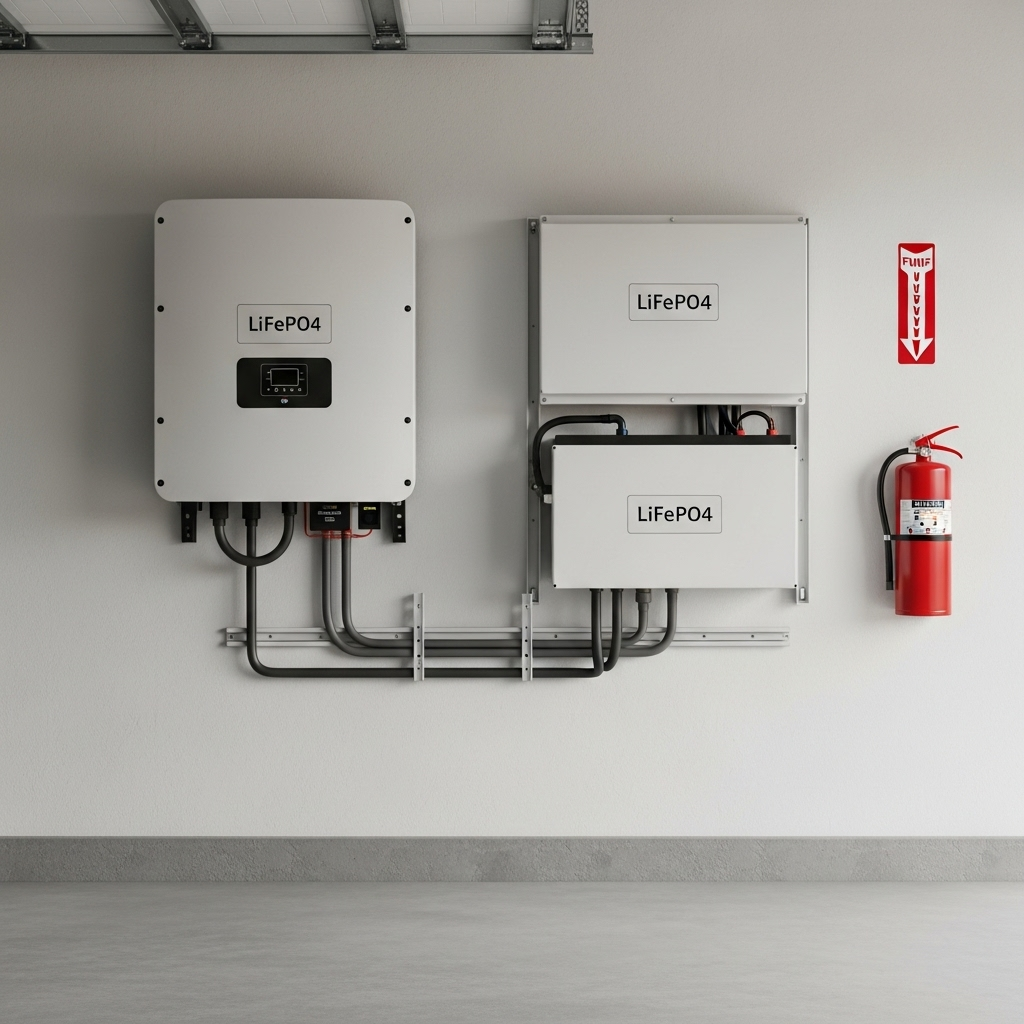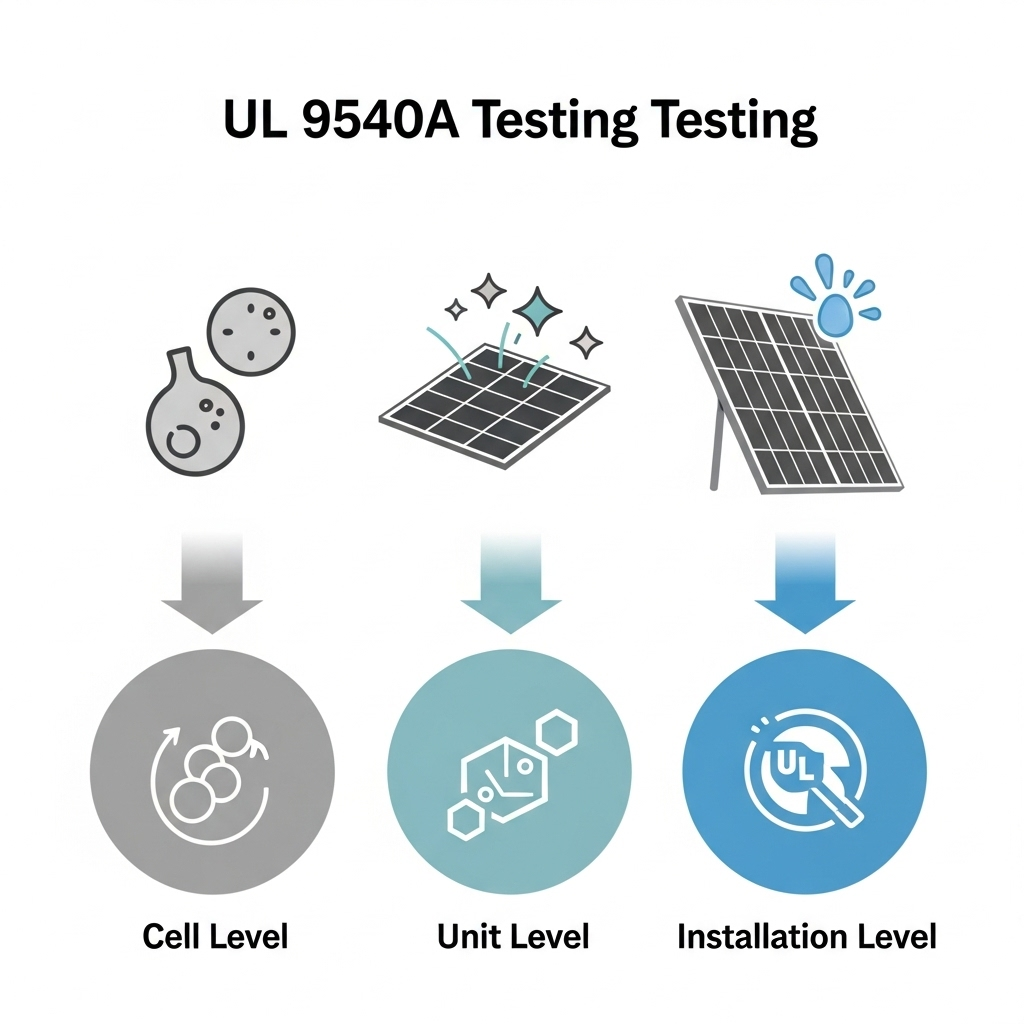Lithium iron phosphate (LiFePO4) batteries are a leading choice for home energy storage, valued for their long lifespan and stability. While their chemistry is inherently safer than many other lithium-ion types, ensuring the safety of your entire system requires diligence. Implementing a routine of specific checks can significantly mitigate risks and give you confidence in your energy independence. These nine field-tested checks cover your system from installation to daily operation.
Understanding the Foundation of LiFePO4 Safety
Before diving into the checks, it's helpful to know why LiFePO4 is a preferred technology and what safety standards govern its use. This foundational knowledge helps you appreciate the importance of each safety measure.
Why LiFePO4 Chemistry is a Safer Choice
The safety of a LiFePO4 battery starts at the molecular level. Its crystalline structure is exceptionally stable and less prone to thermal runaway, a condition where a battery enters an uncontrollable, self-heating state. Compared to other chemistries like Nickel Manganese Cobalt (NMC), LiFePO4 has a much higher thermal runaway threshold, typically around 270°C (518°F), whereas NMC can become unstable at around 150°C (302°F). This resilience makes it a more forgiving and reliable option for a residential setting.
| Feature | LiFePO4 (LFP) | Nickel Manganese Cobalt (NMC) |
|---|---|---|
| Thermal Runaway Threshold | ~270°C (518°F) | ~150°C (302°F) |
| Cycle Life (at 80% DoD) | 4,000 - 10,000 cycles | 1,000 - 4,000 cycles |
| Chemical Stability | High | Moderate |
| Safety Profile | Excellent | Good |
The Role of Certifications: UL 9540 and UL 9540A
Certifications are a critical benchmark for safety. The two most important standards for home energy storage are UL 9540 and UL 9540A.
- UL 9540: This is the Standard for Safety for Energy Storage Systems and Equipment. A UL 9540 listing means the entire system—including the battery, inverter, and management software—has been tested to work together safely.
- UL 9540A: This is a test method, not a pass/fail certification. It evaluates the potential for thermal runaway fire propagation. A system that has undergone UL 9540A testing provides crucial data on its fire risk profile, helping installers and inspectors ensure a safe setup. As noted in a report by the International Renewable Energy Agency, robust Quality infrastructure for smart mini-grids, including adherence to established standards, is fundamental to system safety and reliability.
Pre-Installation and Installation Checks
Proper safety practices begin before the system is even turned on. The initial setup phase is one of the most critical moments for preventing future problems.
Check 1: Verify Product Certification and Documentation
Always confirm that the energy storage system you purchase is listed under UL 9540. This ensures all components have been validated to function together safely. Additionally, look for compliance with international standards like IEC 62933-5-2, which outlines safety requirements for grid-integrated systems. The International Energy Agency's framework for Transforming Global Markets for Clean Energy Products underscores the importance of reliable testing protocols in verifying product performance and safety claims.
Check 2: Professional Installation is Non-Negotiable
DIY installation of a home battery system is strongly discouraged. A professional installer certified in energy storage systems will ensure all electrical connections are secure, wiring is correctly sized, and the installation complies with local building codes and the National Electrical Code (NEC), particularly NEC Article 480 for storage batteries. Improper installation can lead to short circuits, a primary cause of battery incidents.
Check 3: Choose a Safe and Suitable Location
The placement of your battery system matters. It should be installed in a location that is:
- Dry and Ventilated: Keep the unit away from any potential water sources. Good airflow is necessary to dissipate heat generated during operation.
- Away from Living Areas: While LiFePO4 systems are safe, it is best practice to install them in a garage, basement, or an exterior location, away from bedrooms and main living spaces.
- Clear of Flammables: Ensure there are no flammable materials, such as gasoline, paint thinners, or paper, stored near the battery unit.
Operational and Maintenance Safety Checks
Once your system is operational, ongoing checks are key to maintaining its safety and performance over its long lifespan.
Check 4: Monitor Your Battery Management System (BMS)
The Battery Management System (BMS) is the brain of your battery. It protects the cells from overcharging, over-discharging, and extreme temperatures. Most modern systems come with an app or web portal. Make it a habit to check the BMS status weekly. Look for any warnings or fault codes and address them promptly according to the manufacturer's instructions.
Check 5: Regular Visual Inspections
At least once a month, perform a quick visual inspection of your battery system. Look for:
- Physical Damage: Check for any signs of swelling, dents, or punctures on the battery casing.
- Corrosion or Leaks: Inspect terminals for any signs of corrosion. While LiFePO4 batteries are sealed, any sign of leakage is a critical issue that requires immediate attention.
- Cable Integrity: Ensure all cables are securely connected and show no signs of fraying, melting, or damage.
Check 6: Maintain Proper Ventilation and Clearance
Over time, items can get placed around your battery unit. Routinely check that the required clearance distances specified in your user manual are maintained. Blocked vents can trap heat, forcing the BMS to reduce performance or, in a worst-case scenario, trigger a thermal shutdown. Keep the area around the unit clean and free of dust and debris.
Advanced Safety and Performance Monitoring
For those who want to take a more proactive role, a deeper understanding of your system's performance can provide early warnings of potential issues.
Check 7: Understand Your System's Performance Metrics
A healthy battery is a safe battery. Familiarize yourself with key performance indicators like State of Charge (SoC), Depth of Discharge (DoD), and C-rate. A sudden drop in capacity or an inability to hold a charge could indicate an internal issue. For a comprehensive overview of how these metrics work, this guide on solar storage performance offers valuable insights into optimizing battery health and longevity. Monitoring these trends helps you spot problems before they escalate.
Check 8: Implement Thermal Monitoring
While the BMS has internal temperature sensors, adding an external thermal sensor or a smart smoke detector in the room provides an extra layer of protection. Some smart detectors can send an alert to your phone if the ambient temperature rises above a set threshold, giving you an early warning. As technology advances and costs fall, as detailed in IRENA's Renewable Power Generation Costs in 2024 analysis, integrating such advanced safety features becomes increasingly practical for homeowners.
Check 9: Have a Clear Emergency Response Plan
Preparedness is the final check. Ensure everyone in the household knows what to do if a battery alarm sounds or if they see smoke. Your plan should include:
- The location of the system's main disconnect switch.
- Having an appropriate fire extinguisher nearby. A multi-purpose ABC extinguisher is generally recommended, but always follow the battery manufacturer's specific guidance.
- Knowing when to evacuate and call emergency services.
Proactive Safety for Long-Term Peace of Mind
Choosing a LiFePO4 battery is an excellent first step toward a safe and reliable home energy storage solution. However, safety is not a 'set it and forget it' feature. It is an active partnership between quality technology and responsible ownership. By regularly performing these nine field-tested checks, you empower yourself to protect your investment, ensure the well-being of your home, and enjoy the full benefits of energy independence for years to come.
Disclaimer: This article provides general information and is not a substitute for professional electrical, legal, or financial advice. Always consult with a qualified professional for your specific situation.
Frequently Asked Questions
Is a LiFePO4 battery a fire hazard?
Any device that stores a significant amount of energy carries some risk. However, LiFePO4 is widely considered one of the safest lithium-ion chemistries available due to its highly stable chemical structure and high threshold for thermal runaway. When combined with proper installation, a certified system, and routine maintenance as outlined in these checks, the fire risk is extremely low.
What does UL 9540A compliance really signify?
UL 9540A is a test method, not a certification mark like UL 9540. It is designed to determine the fire safety risk of an energy storage system by evaluating its response if a single cell were to experience thermal runaway. A system that has undergone this large-scale fire test provides critical data that helps designers and safety officials understand how a fire might propagate. This information is used to define safe installation requirements, such as separation distances between units.
Can I install a home battery myself?
It is strongly recommended that you do not install a home battery system yourself. Professional installation is crucial for safety, code compliance, and maintaining your product warranty. Certified installers are trained to handle high-voltage DC electricity, understand the specific requirements of NEC Article 480, and ensure all components are integrated correctly, minimizing risks like short circuits or improper grounding.
How often should I perform these safety checks?
A good routine would be: Check your BMS monitoring app weekly for any alerts. Perform a quick visual inspection of the unit and the surrounding area monthly. Conduct a more thorough check of cable connections and ventilation clearances quarterly. Finally, schedule a professional maintenance check annually or as recommended by the system manufacturer to ensure everything is operating optimally.





Leave a comment
All comments are moderated before being published.
This site is protected by hCaptcha and the hCaptcha Privacy Policy and Terms of Service apply.